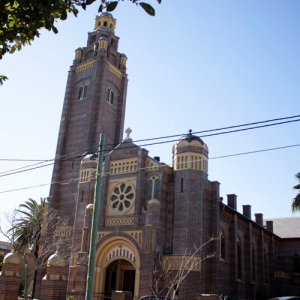Peter MALONE
Mona Lisa and the Blood Moon

MONA LISA AND THE BLOOD MOON
US, 2022, 106 minutes Colour.
Kate Hudson, Jeong Jong-seo, Craig Robinson, Evan Whitten, Ed Skrein.
Directed by Ana Lily Amirpour.
The title sounds like one of those old-fashioned horror/dramas of the past. B-film title. And, that maybe the best way to appreciate this film. It is set in the underside of New Orleans, the world of clubs, strippers, money, violence.
But that does not quite do it justice. In fact, it opens in quite a different mood. The old theme song, Oscar-winner from the 1950s film After Midnight, begins to play – and recurs throughout the film, a speculation on da Vinci’s famous painting and its enigmas: Mona Lisa smile. But, the Mona Lisa of this film smiles very rarely. She is interned in a mental institution and has been for many years. She is potentially violent, with a straitjacket. And we see her taunted by a manicurist with a bad mouth, who get her comeuppance from Mona Lisa who is then able to escape the institution, wearing the straitjacket. She is Korean.
The police have been notified but she escapes capture, but gets attention by going into shops, very hungry, taking food, but rescued by a stranger who hangs around the area (Ed Skrein).
But, the key thing is – and whether this is caused by the full moon, the blood moon, is not quite explained – is that she has psychic influence over those she wants to harm, miming behaviour, the victims imitating her, with violence to themselves. This is particularly the case with an officer, Craig Robinson, whom she forces to shoot himself in the leg. Recovering, he makes it his aim to track her down.
In the meantime, a tough stripper, played surprisingly by Kate Hudson, is involved in a brawl but is rescued by Mona Lisa. The tone of the film changes somewhat, a plunge into the strip clubs and many of the obnoxious customers, but Bonnie decides to use Mona Lisa’s power to get them to empty their wallets (which will have some harsh consequences later for Bonnie). And, what better than to stand by bank outlets and control customers to hand over $500 each. (But, they neglect to remember that they are under camera surveillance.)
The human element comes into the tale with the revelation that Bonnie has a 10-year-old son, Charlie (Evan Whitten, quite persuasive). His mother is harsh with him and he reacts badly. He certainly hostile to Mona Lisa coming into the house – but, she is curious about his angry dancing, joins him in the dance and they become friends.
If this sounds intriguing, there are several plot developments for further intrigue, especially Charlie and his helping Mona Lisa but his having to make final decisions to help her.
- The title? The reference to Mona Lisa? The song and its lyrics? The enigmatic painting, the smile?
- The title, the blood moon, the full moon, the influence on people, mental conditions?
- The New Orleans setting, the mental Institute, the countryside, roads and bridges, stores, people on the street, the nightclubs, the interiors? Apartments? Atmosphere?
- The musical score, the range of songs?
- The introduction to Mona Lisa, straitjacket, the institution, her age, Korean, the manicurist, her attitude, bigoted, brutal, turning the tables, injuring herself? The escape, the receptionist banging his head on the mirror? Her getting out, wandering, into the city? The shop, being hungry, the chips, help from the stranger, his payment, sexual advance, his shirt? His later recurring, helping Mona Lisa, with the false documents, getting her to the airport?
- Officer Harold, at work, eating, called, the women sick in the street, the encounter with Mona Lisa, her controlling him, his shooting his leg? His recovery, his continued pursuit of her?
- Introduction to Bonnie, the fight in the street, Mona Lisa helping her, Bonnie taking her home, helping her, Charlie and his negative reaction, his negative reaction to his mother? Going to the club, Bonnie and her stripping, the other dancers and their attitudes, the men, Mona Lisa controlling them to empty their wallets? And the later repercussions, confronting Bonnie, bashing her? (And the final with the bouncer outside and his attacking the men?)
- Going to the bank outlets, the control, $500? The police, concern? The surveillance cameras identifying them?
- Mona Lisa finding some happiness, talking with Charlie, his angry dance and explanation, the joining in, their becoming friends?
- Inspector Harold, confronting Mona Lisa, urging people to avoid looking at her?
- Bonnie, the assault, in hospital? Mona Lisa deciding to leave, Charlie helping her, getting the false documents, going to the airport, the choice of destination, getting through security? Charlie and his change of heart, his denouncing the innocent woman and the consequences for the police, inspector Harold and the others at the airport?
- Charlie, the visit to his mother? Charlie and his saving Mona Lisa – and her flying away, and the image of her looking at the plane window?
Halloween Ends
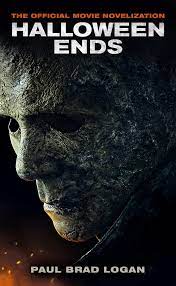
HALLOWEEN ENDS
US, 2022, 111 minutes, Colour.
Jamie Lee Curtis, Andy Matichak, James Jude Courtney, Rohan Campbell, Will Patton, Michael Barbieri, Joanne Barron, Rick Moose.
Directed by David Gordon Green.
Will the franchise really end? There have been promises of co in thenclusions in the past but somehow or other a sequel has always emerged. It really looks that this time, especially concerning Michael Myers and his decades of menace and murder, has found its conclusion. However, as Laurie Strode is writing her autobiographical version of what happened, she does suggest that evil lives on in various forms!
(In fact, some of the bloggers, perhaps not wanting the series to end, but highly critical of this film, say that the ending here is a really not an ending, that the film is a fake, and they are waiting for a real ending – this has the sound not of a fan, but of a fanatic!)
This is the third of the last Halloween films and it has been directed by David Gordon Green. They reintroduced Laurie Strode, Jamie Lee Curtis, deaths in her family, her relationship with her granddaughter, Allyson, the impact of the history of Michael Myers, her drinking, her rehabilitation. Which means that in this film, she has a certain gravitas, a concerned grandmother, the butt of criticisms in the town because of her association with Michael Myers, but doing the best with her granddaughter, worried about her relationship with a young mechanic.
In fact, the initial focus is on the mechanic, young, awkward, with a harridan of a mother but has a large, quietly gentle father, doing a babysitting job which, to his surprise and, definitely to ours, ends in tragedy. He also becomes targeted in the town, especially by a group of arrogant bullies. At one stage, he is thrown over a fence, down an incline which leads to a tunnelling drainage area where he, and we, discover Michael Myers living in hiding! It seems that the young man looks into Michael Myers’ eyes and there is transference. What happens to the young man is a variation on Dr Jekyll and Mr Hyde. Which is interesting in itself.
But, the young man is attracted towards Laurie’s granddaughter and (it is a bit hard for us in the audience to believe this) she is attracted to him. But, with his erratic behaviour and attitudes Laurie is wary.
The police chief from the previous films, Frank (Will Patton) is still around – carrying a torch for Laurie.
Because the first part of the film does not have so much suspense nor gory killings, some of the fans have dismissed it, telling the producers that they should have been making the usual slasher interpretation of Halloween and not be trying to do a psychological film. However, many of the audience would probably prefer these aspects of the psychology. But, of course, with Michael Myers on the loose and the young man under his influence, there are a number of killings, and vengeance on bullies. And danger for the granddaughter. And, needless to say, but we have to say, the buildup to the final confrontation between Laurie and Michael Myers, the culmination of 44 years of Halloween films, the horror of Michael Myers, the sadness of Laurie.
So, the end of an era. (That Hollywood has always been open to a sequel, one way or another.)
- The long history of Halloween films? John Carpenter and his invention, continuing as executive producer, contributing to the musical score? Over 44 years?
- The three films by David Gordon Green, reintroducing Laurie? The return to the town, the family situation, suspicions in the town, Michael Myers and his return, wreaking havoc?
- Going back to the town, Illinois, Middle America? Homes and apartments? The police? Shops? The streets? Ordinary people, ordinary life, the celebration, Halloween?
- The introduction to Corey, age, awkward, babysitter, the cheeky boy, the parents, going out, playing the games, the boy locking Corey in the room, his breaking out, the boy falling to his death, the parents’ reaction? The court finding it an accident? Corey becoming a victim in the town, groups bullying him, the physical assaults, at home, his work, his kindly father, the bicycle, the gift of the motor bike? His severe mother? His encounter with Alillyson? Attracted to her?
- The place of Laurie in the town, people blaming her for Michael Myers? Over the years, drinking, recovery, family deaths, relationship with her granddaughter? Writing her autobiography? The meeting with Frank, his attentions to her, flowers and gifts? Her suspicions about Corey, warning Allyson, Allyson reacting against her grandmother?
- Allyson and Corey, on the bike, the outings, the bond between them?
- Corey, the bullies, thrown over the fence, the tunnels, the drains, the appearance of Michael Myers? The scruffy old man, his warnings? Michael Myers looking into Corey’s eyes? Transfer of power?
- Corey, his vengeance, yet his bewilderment, the bullies at his father’s yard, shooting his father? The pursuit of vengeance? The Michael Myers mask?
- Michael Myers, with Corey? The Jekyll and Hyde situation for Corey? The killings, slashing?
- Allyson, wanting to leave, the attraction to Corey, defying her grandmother? His finally returning to the house?
- Corey, coming to the house, Laurie’s attack, Corey and his death, the mask, Michael Myers entering, slashing Corey, the buildup to the confrontation between Laurie and Michael Myers, and saying she was going to kill herself? His finding her, the fight, Alison’s presence, her confining Michael Myers, his hands, killing him?
- Halloween ends, Frank and his attentions, Allyson and her leaving, Laurie free, finishing her writing – but noting that evil comes in various forms? Actually the ending – or not?
Advance history St Brigid’s Church Coogee. Centenary Mass, November 13th 2022.
Advance history St Brigid’s Church Coogee. Centenary Mass, November 13th 2022.
From the OLSH Randwick Bulletin in 2011.
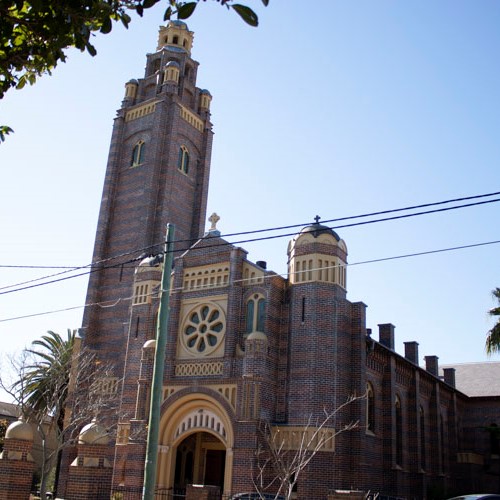
The original St Brigid’s Church Coogee was a small church-school with a congregation of about 100 Catholic families. It was built on the corner of Mount St and Berwick St in 1911. Mondays to Fridays it was a school and a church on weekends. It was part of Our Lady of the Sacred Heart parish Randwick until 1914. By 1919 the congregation had expanded to 1500, and the small school-church could no longer cope with the growth. The noise of the tram going past the door of the building was a distraction to thestudents on week days and the congregation on weekends. A larger church was needed.
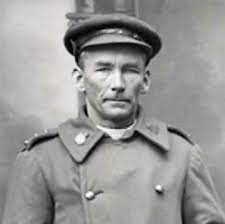
Fr James Gilbert MSC who had a distinguished chaplaincy war record, 1914-1918.
On 30 November 1919 Frs James Gilbert and Arthur Perkins, the first two parish priests, purchased a property at Brook Street Coogee for £8,387 for a church and school. The existing home would be used as a presbytery for the parish priest. The site is where St Brigid’s is now located. Albert Bates was engaged as the architect to design the church to Fr Gilbert’s specifications. The builder was Albert Travis and this project would be the biggest project of his career. Bates and Travis had worked together on many other projects for the Catholic Church.

During his war service as chaplain, Fr Gilbert visited London and was impressed by Westminster Cathedral and he asked Mr Bates to reproduce a smaller version of Westminster Cathedral for St Brigid’s. The church is in the Byzantine style featuring polychromatic (light and dark bands) brickwork and a curved vaulted ceiling under a traditional cruciform roof. Fr Gilbert specified that the interior be vast and spacious. Six main pillars on each side support the roof. The first altar was made of wood in a light oak colour as were the pews, choir loft and main doors. The stained glass window of the Sacred Heart directly above the main altar is a fitting reminder that the parish is under the care of the Missionaries of the Sacred Heart.

Outside, the impressive tower dominates the landscape for kilometres and is a landmark for pilots landing at Sydney Airport. The church was opened in 1922 and consecrated by Archbishop Michael Kelly. With the church completed, Fr Gilbert began the school project, the main portion being completed in 1923, followed by the new presbytery in 1924. During this period the statue of St Brigid on the north-west exterior corner of the church was added. It was considered as one of the finest statues in Sydney of the 1920s, the classical features being used as a model for art students. The parish hall was the final building erected and was completed in 1935. In 1945, Fr Perkins, then parish priest, decided to replace the timber altar, pulpit, altar rails and wall surrounds with marble. Marble from Queanbeyan was used and is of a rich cream colour, veined with ochre tints. Melocco Bros, the builders, fortunately were able to utilise the services of Italian POWs who were skilled marble workers. The finished altar is a tribute to their skills.
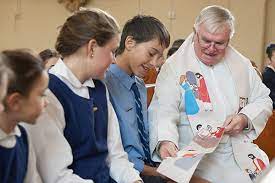
In recent years, the parish priest has been Phil Hicks MSC, now succeeded by Fr Thoi Tran MSC.
The church was included in the National Trust Register in 1987. That citation highlighted the impressive Byzantine style, the outstanding tower and the beautiful marble altar. Items of significance include the face brickwork and cement render, stained glass, internal plater work and polished timber joinery. The brickwork, in particular, was a bold design statement by the original architect and is unique in New South Wales. In 1992, The Shrine of Our Lady of the Sacred Heart, a glass engraving by Anna Dybka, was commissioned. It is now positioned in the northwest alcove of the church. The Holographic Shrine of the Sacred Heart, created by the artist Paula Dawson and blessed in 1997 is the world’s first example of a laser driven holographic shrine. In December 2000 conservation works commenced consisting of re-pointing brickwork mortar joints, repairs to deteriorating internal plaster, ceilings, cement rendering, copper domes, roof flashings, windows and lighting. These repairs have extended the fabric of the building by another 50 years.

Wolf/ 2021
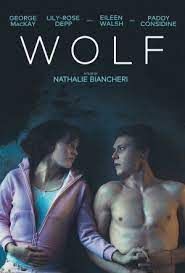
WOLF
Ireland/UK/Poland, 2021, 99 minutes, Colour.
George MacKay, Lily-Rose Depp, Paddy Considine, Stuart Graham, Helen Behan, Lola Petticrew, Darragh Shannon, Eileen Walsh, Fionn O'Shea.
Directed by Nathalie Biancheri.
With the title, it echoes of all the werewolf films over the decades, the horror films, the high-class explorations like Wolf with Jack Nicholson, audiences were expecting a variation on this theme – some expressing quite some disappointment.
This is an Irish production with assistance from Polish money. And it is a psychological drama rather than horror.
Many audiences will be surprised at the theme of Species Identity Disorder (also known as Otherkin), which may not be familiar at all. It is human beings identifying as animals, in behaviour, in attitude, in psychological identification. This film shows an Institute with patients identifying with a range of animals and birds, the methods of the staff in dealing with the disorder, some genial, therapies, but others quite severe, the equivalent of aversion therapy/conversion therapy, familiar with stories of attempts to change sexual orientation. This film shows the happier side of therapy and the response of those in the institution. But, it also shows the much harsher, cruel side of therapy.
At the centre is a young man, Jacob (George MacKay), identifying as a Wolf, brought by his loving parents to the institution. There is a young woman, Wildcat (Lily-Rose Depp) who is attracted to him, ultimately helping him to escape.
But, also at the centre is a sadistic therapist, using all the techniques of aversion therapy, threats, treating the patient as an animal, urging animal behaviour, then turning the tables. His played with ferocious energy by Paddy Considine.
Not the easiest of entertainments – but an interesting opening up of an unfamiliar area of psychological disorder.
- The title? Audiences expecting werewolf stories? Horror? Audiences feeling thwarted to discover that this was a psychological drama? Mental illness? A species identification drama and therapy?
- The Irish setting, homes, the institution, the surrounding countryside and forest, the interiors, the rooms, the cells, isolation? The musical score?
- The focus on Jacob, seeing him naked in the forest, his identifying as a wolf? His parents, their love, concern, taking him to the institution, their hopes?
- The issue of species identification, Species Identity Disorder, Otherkin, parallels with sexual and gender identification? Therapy?
- The range of patients present, German Shepherd, Wildcat, horse, duck… The manifestations of the disorder, the identity, mimicking the animal, behaviour?
- The range of staff, the doctors, those who are sympathetic, the exercise, movement, dance, outdoors? The discussions, urging normality?
- The harsh therapy, at the centre with The Zookeeper, his character, behaviour, beliefs, therapy, extreme versions of aversion/conversion therapy, patients with halters, his control, making them behave like animals, close-up threats, urging them to normality? The increasing severity, with the different patients, with Jacob?
- The focus on Jacob, his identification with being a wolf, the introductions to the group, his observations, the doctors, with The Zookeeper, the physical treatment, the psychological treatment, aversion therapy? Becoming more extreme, the effect on Jacob? His reactions, being urged to act like a wolf, to howl? The solitary confinement and its effect on him? At the moment of peace with the visit of his concerned parents?
- The character of Wildcat, her presence, her identification, seeming part of the staff, wandering around, the attraction to Jacob, helping him, the visit to solitary, the sexual encounter, the consequences? Getting the key, the escape? Her finally being unable to leave, wanting Jacob to stay? His decision, climbing over the fence, the escape, his howling in the forest?
- The effect of the film on the audience, spending such a long time with these patients, their mental disorder, the gentle therapies, the harsh therapies, the equivalent of torture for aversion?
Quant
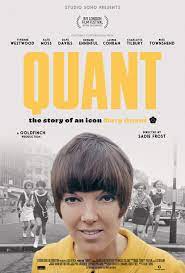
QUANT
UK, 2021, 86 minutes, Colour.
Camilla Rutherford.
Directed by Sadie Frost.
Perhaps Mary Quant can be considered quintessentially British with her distinctive fashion sense moving from the 50s and highly influencing the 1960s, easy clothes for the ordinary woman, the miniskirt, and further developments in fashion as well as in cosmetics.
Here is a biography, a portrait, a tribute, directed by actress Sadie Frost.
It is a delving into Britain’s past, Mary Quant born in 1930, the heritage of World War I, the experience of World War II, the development of her interest in fashion, the move away from more formal styles, her interest in ordinary clothes. And, of course, she achieved some notoriety with the introduction of the miniskirt (though there is mention in the film of a French designer, Andre Courreges, earlier creating it), with the publicity of model such as Jean Shrimpton and Twiggy.
So, there is background to her family, growing up, influences, her work, the establishment of the shop in Kings Road, Chelsea, its popularity, and encouragement to her work in design.
The film also presents her relationship with Alexander Plunkett-Greene who promoted her work. He died in 1990, a 33 year long marriage, with one son who also gives his testimony about his mother and father. And, there is a great deal of footage of the time showing Mary and Alexander and their work together.
In 1966, Mary Quant won awards for the dress of the year as well is getting an OBE. However, it was not till 2015, with Mary at the age of 85, being appointed Dame by the Queen.
There is a great deal of footage from the various periods, discussions about business acumen and developments, the extension of the Quant Empire to cosmetics. And, for those who enjoy fashion, quite a number of contributions by people like Vivienne Westwood, Kate Moss, Jasper Conran.
While this documentary could be enjoyed by a wide audience, it is very much a specialist film for fashion aficionados.
Blackout/ 2022
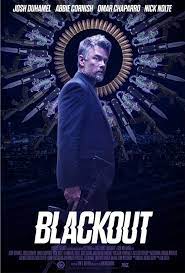
BLACKOUT
US, 2022, 81 minutes, Colour.
Josh Duhamel, Abbie Cornish, Nick Nolte, Omar Chaparro, Barbara de Regil.
Directed by Sam Macaroni.
Blackout is a brief American action show, the kind that used to be referred to as “straight-to-video”. It will appeal to the straight-to-video audience, a tough hero, difficult situations, amnesia, cartel bosses, DEA agents – and some final twists. It is the kind of action show that is easily dismissed by critics and those who want subtle entertainment.
It is surprising to find Josh Duhamel, aged 50, as a tough action hero. This is the kind of film that usually has Bruce Willis in it somewhere or has Nicolas Cage as the lead. However, Duhamel acquits himself with quite a lot of tough action, hard exterior, trapped by amnesia.
The film opens with Duhamel making an escape with a metal case, his car fired at, crashing, his finding himself in hospital, on the Mexican American border, looked after by a doctor, and a woman claiming to be his wife, Abbie Cornish, sitting with him. Gradually, he gets his memory back, we see this in flashbacks.
However, there are quite some complications involving the drug cartels, tough thug with a lot of subordinates taking control of hospital, even locking it down, blackout and generators supplying power. It seems that the hero has connections with the cartel – and they want that case that he has taken. What follows is a very tough-guy routine, the hero getting out of his bed, moving around the hospital to get free, lots of encounters with thugs and shootouts and fights.
In the meantime, there is contact from a DEA agent, played by Nick Nolte in his old grizzled way, trying to find out where he is when he makes phone calls from the hospital, getting his agents together and making towards the city.
And there is quite some ambiguity about the Abbie Cornish character, certainly not his wife, the puzzle about the case, her identity, whether she is with an agency or not.
There is a twist at the end which, when it comes, is not surprising – which means further confrontations, suspicions against Abbie Cornish, shootouts and a romantic happy ending.
One can say, typical brief American tough action.
Lancaster

LANCASTER
UK, 2022, 110 minutes, Colour.
Directed by David Fairhead, Ant Palmer.
A very British documentary which will be of great interest to audiences who want to understand and appreciate the role of bombers in World War II. This warfare is now seen in the hindsight of almost 80 years.
One of the comments to make immediately is that there is an extraordinary amount of aerial photography, not only in the present, but in archival material from the war years and missions themselves. We are made participant in the flights, with the men, the night missions, the limitations of guidance technology, the experience of dropping the bombs, the explosions and devastation.
This is not a film about the detailed development of the Lancaster bombers. Rather, it does give background to the situation in the late 1930s, early 1940s, the design of planes, the building, the discovery of shortcomings – and the emergence of the Lancaster with explanations of why it was successful.
One of the great advantages of this film is the number of pilots and gunners who have been interviewed, several in their 90s, but still alert, delving into the memories, their experiences, their emotions, the realities of war. Most of them are British but there is an Australian and New Zealander or two and a pilot from Jamaica. They interview very well, articulate elderly men, reflective men, assessing what they did – and pondering the consequences, especially the destruction, but, more especially, the loss of lives, civilian lives (in Hamburg and, most tellingly, Dresden), as well as the high number of men who were killed in action, around 55,000.
One of the earliest features of this kind of warfare was Britain on the receiving end, especially during the Blitz. With the development of such planes as the Lancasters, the war was taken to the continent, against the Germans. One of the episodes that was immortalised in book and feature film in the 1950s was that of the Dam Busters, this documentary explaining the training, the targeting, the consequences (and also including clips from the film itself). There is also the attack on Hamburg and its munitions centres but also the consequences for civilians. We see the attacks, night and day, on Berlin. And, in February 1945, the attack on Dresden.
The men themselves raise the issues of the morality of this kind of bombing and the consequences for civilian deaths. There is also background commentary, with Charles Dance as narrator) on the responsibilities of those in charge of the RAF and Bomber Command, but, especially, the responsibilities of the politicians, notably Winston Churchill (with photos and clips of him, statues and images), and the accusation that he took responsibility for success in action but not for the consequences, the airmen feeling he turned his back on them.
One of the interesting features of the film with a great deal of footage is 1944, the role of Dwight Eisenhower, the Americans working with the British, the targets on 5 June 1944 and then, the aerial visuals of the vast fleet sailing towards the D-Day landing.
A very interesting documentary in itself – but, especially as a record of the veterans reminiscing, a collection of photo and movie clip visualising of the Lancaster and its missions.
Zeroes and Ones
ZEROES AND ONES
US/Italy, 2022, 82 minutes, Colour.
Ethan Hawke, Cristina Chiriac, Phil Neilson.
Directed by Abel Ferrara.
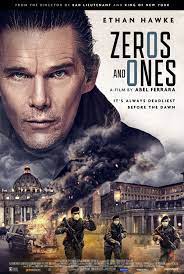 The third of three films, following Tommaso and Siberia, both with Willem Dafoe, that writer-director Abel Ferrara made from his Italian base.
The third of three films, following Tommaso and Siberia, both with Willem Dafoe, that writer-director Abel Ferrara made from his Italian base.
Popular comments, especially on the IMDb, do not offer any favourable reviews or assessments of this film (except one, who argues that it is a masterpiece, but one wonders whether this is tongue in cheek!). This review is not going to respond favourably either.
Quite a number of people indulge their comments with stating that the title of the film was really the star rating for the film itself (although the ones were exaggerated!).
The film opens with an on camera interview with the star, Ethan Hawke, praising the work of Abel Ferrara and his insights. At the end of the film, Ethan Hawke appears again, indicating that his initial words were a contribution to fundraising to make the film. He finally offers some comment about Ferrara’s perceptions about good and evil – but there are a lot of hesitations which does not make his commentary as convincing as all that.
Audiences are going to find the film and its plot difficult to follow – although, by the end, we realise that Ethan Hawke is playing an American in Rome, special squad, Covid times, the streets empty, but his tracking down some officials, some women, a mother and child, a prostitute, a cocaine dealer, not always welcomed by the locals because he is American, walking down side streets, empty, as well as near the Vatican and Saint Peters. He is also searching for his twin brother. There is warning of a terrorist attack on the Vatican. There are also scenes of explosions.
But, as the film progresses, it is not always easy to follow this narrative. One of the difficulties is that the action takes place at night, streets not well lit, nor interiors – and one reviewer making the sardonic comment that the director of photography must have been competing in a competition as to how much could be filmed with the least amount of light! Just so.
Ferrara has made many strange films but also many striking films supported by this reviewer, especially Bad Lieutenant and the International Catholic film office award in Venice, 1996, for The Funeral. But he has also made some films which seem self-indulgent, highly subjective, not readily communicating to the audience. And this film is one of those.
Here is something of a positive overview from the rogerebert website:
Ethan Hawke (Training Day) and director Abel Ferrara (Bad Lieutenant) join forces for this gritty, tense political-thriller set on one deadly night in Rome. Called to the city to stop an imminent terrorist bombing, soldier J.J. (Hawke) desperately seeks news of his imprisoned rebel brother, Justin (also Hawke), who holds knowledge that could thwart the attack. Navigating the capital's darkened streets, J.J. races to a series of ominous encounters, hoping to keep the Vatican from being blown to bits.
Quintessentially British
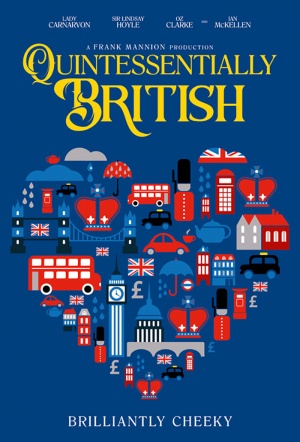
QUINTESSENTIALLY BRITISH
UK, 2022, 97 minutes, Colour.
Directed by Frank Mannion.
Quintessentially itself sounds a very British word. And it is used frequently in this documentary.
For audiences who enjoy British culture and tradition, obviously, a must. For audiences outside Britain, an opportunity to see and hear aspects of British culture (the quintessential aspects), and to listen to a wide range of commentators reflecting on the culture.
By and large, the commentators are very interesting. Ultimately, pride of place with the most comments is actor Ian McKellen, always welcome, initially talking about Shakespeare as the greatest British personality, and highlighting the fact that he was an actor. But McKellen has many things to say on all aspects of British culture, very much middle-class with his Northern background, his own career, his social stances. Very pleasant is Oz Clarke, writer and television presenter, very lively.
The question of upstairs-downstairs surfaces very early in the mind of the audience. The device of the documentary, written and directed by Frank Mannion who appears in various sequences, is to start with the upper-class, references to the monarchy as there are throughout the film, visit to the House of Lords, visits to a variety of castles and Blenheim Palace with lively comment from Lady Carnavon.
But, most of the commentary is middle-class. And, we get panoply of glimpses of all kinds of British culture, from racing, the music of Edward Elgar, films and Downton Abbey, Daniel Craig and James Bond, cricket, of course (but no rugby or soccer). There is fashion (with reference to purchases by the Royal family, the Queen and her purses, Charles and his shoes). Mannion himself spends time in Saville Row, measured for a suit, details of the cutting of the pattern and cloth, shoes to match.
Obviously there are aspects of British culture that we would like to have seen something of. Elgar, yes, but the Beatles! And, as mentioned, football codes.
However, in the latter part of the film, questions that the audience might have had in mind are all answered, especially multi-cultural England, multi-cultural Britain, the role of the Scots, the Welsh, Northern Ireland. But, the range of migrants from the West Indies, from Africa, from the subcontinent, (and some from Italy) are all shown, with a great number of interviews, seeing the migrants in context, as part of the developing British culture, widening and depth thing the quintessential.
Advance notice – Daramalan celebrating 60 years, Saturday October 22, 2022.
Advance notice – Daramalan celebrating 60 years, Saturday October 22, 2022.
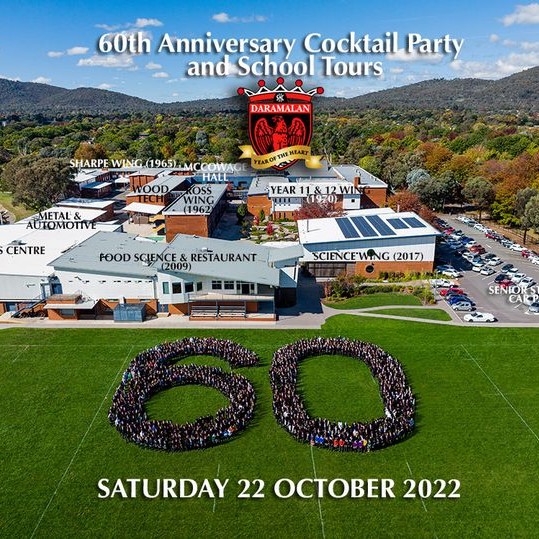
August 1961 saw the first sods being turned on an empty field in Cowper St Dickson and six months later on 30 January 1962, 240 boys in Years 5, 6 and 7 (First Form) trooped through the doors of Canberra’s newest school, Daramalan College. The Headmaster at the time, Fr McMahon MSC explained to the first Assembly, that the name ‘Daramalan’ came from the local Aboriginal word for ‘eagle-men’, the eagle being their symbol to indicate the Great Spirit. That same spirit aligns with the ‘heart’ ethos of the Missionaries of the Sacred Heart, which has been pivotal in the education of our 17,000 students over the last 60 years.
To commemorate this anniversary, we will be holding a Community Cocktail party at the College on Saturday 22 October. You are invited to come along and celebrate with past students as well as current and former teachers. Please indicate your interest here:
http://www.daramalan.act.edu.au/60th-anniversary.../

